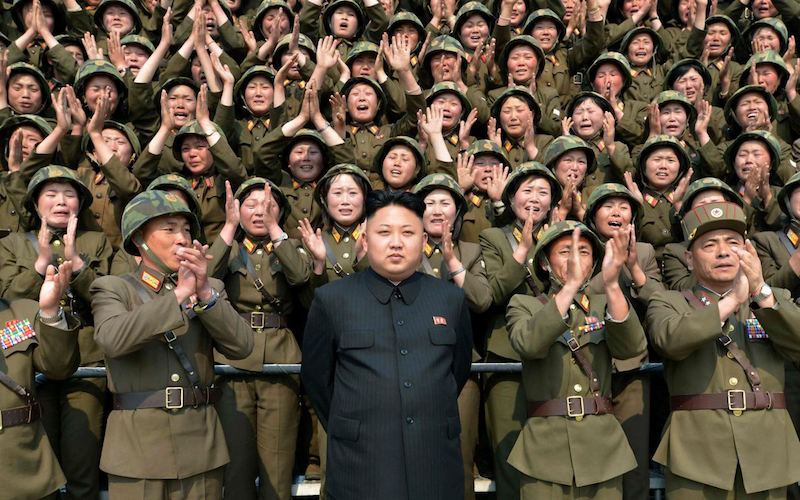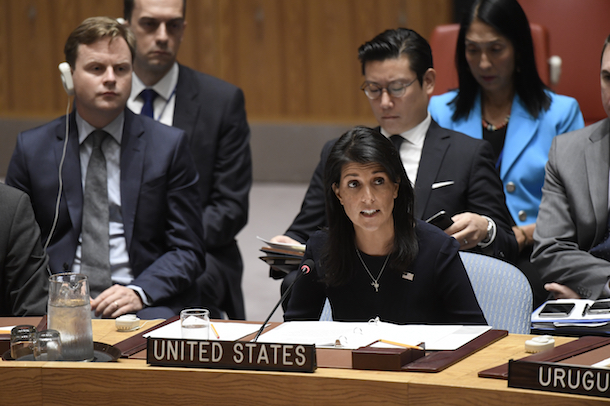
Beggars for War: The U.S., North Korea and Bankruptcy
The statement before members of the United Nations Security Council was both brash and high strung. The US ambassador had clearly decided that firm words were needed to understand the continuing military advances of North Korea. To do so, Nikki Haley, far from the sharpest tool in the US diplomatic toolbox, hit upon what Kim Jong-un was doing: “begging for war.”
“Enough is enough,” she warned those gathered in the emergency session. “War is never something the United States wants. We don’t want it now. But our country’s patience is not unlimited.” Troubling then, that the United States should be encouraging the circumstances for that war to take place.
Haley’s points suggest the exhaustion of options. They also cast a light on continuing failings. “Despite our efforts the North Korea nuclear program is more advanced and more dangerous than ever.” Suggesting, in fact, that US foreign policy has failed to reassure and counter; to contain and hem in.
But to hem in, to contain, to asphyxiate – the conditions, in short that will make Kim beg for conflict – is exactly what is being proposed. The upstart’s wings will be clipped, goes this attitude, and Kim will be potted.
To aid this, the Trump administration is renewing its efforts to enlist China to do its dirty work: bankrupt Pyongyang. A form of forced economic encirclement is proposed. The South Korean President Moon Jae-in has also suggested cutting off North Korea’s access to crude oil and foreign currency sources.
Beijing is hardly thrilled to shrink trade with a state that actually grew last year. “A temporary or partial ban is possible,” suggested Shi Yinhong, an adviser to the Chinese cabinet, “but the Chinese government will definitely refuse to cut off oil exports completely or permanently to North Korea.”
The method of forcibly starving a country of its oil and other necessaries has a good precedent for encouraging, rather than discouraging war. The United States was very much in the position of provoking conflict when it came to dealing with Japan in 1941. The rhyme of history is a strong one.

In the summer of 1941, prior to his departure for Placentia Bay, US President Franklin D. Roosevelt gave an executive order to freeze all Japanese assets in the United States. This was another measure to add to various embargoes on such items as scrap metals that were already implemented in 1940. Imperial Japan, went the reasoning behind these orders, might duly compose itself, desisting from aggressive measures in China, Indochina and Southeast Asia.
This approach did have its panic-inducing effect suggesting, to such historians as Charles Beard and Charles C. Tansill, the necessary opening of a back door to war. Given Japan’s hunger for US crude and refined petroleum products, the need to seek and obtain licenses to export and pay for each shipment of goods from the United States seemed steep. But supply would still flow.
What Roosevelt had not anticipated was the mischievous ferret under the cocktail cabinet. The agency responsible for granting such licenses fell that summer to Assistant Secretary of State Dean Acheson.
The disruptive Acheson, against state department advice, withheld approval for licenses to Japan to pay for goods in dollars. This was made more onerous by the fact that the US dollar was Japan’s only medium of international exchange after the German invasion of the Soviet Union. The supply effectively dried up, targeting key Japanese vulnerabilities outlined by various studies done by the Economic Control Administration.
A cocksure, hardline Acheson was certain that his actions would not provoke in quite the way it did. “No rational Japanese,” he confidently surmised, “could believe that an attack on us could result in anything but disaster.”
This amounted to, in the words of financial historian Edward S. Miller, a conscious and dangerous strategy to bankrupt Japan, a change from an initial “patchwork of export restrictions to full-blooded financial warfare.” It was the sort of economic belligerence that had its ultimate realisation in the attack on Pearl Harbour on December 7 that year.
There are natural differences between the context of 1941, which saw Japan snaking relentlessly through Asia, and 2017, which sees a contained nuclear armed midget facing a bellicose superpower. What remain are the ingredients of desperation, and the assumption that reason shall prevail between the players.
Historical analogies do offer useful illustrations, even if superficial. The one that stands out here is not only that threats of war can loose their edge of pantomime. (Will you really fire the first shot?) To forcibly cut off a state from its lifelines, to render it an economic invalid, can also be tantamount to a declaration of conflict, a form of begging, in fact, for war.

